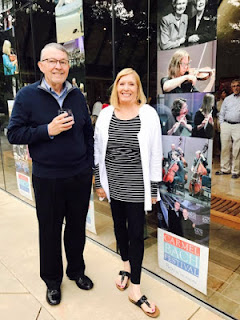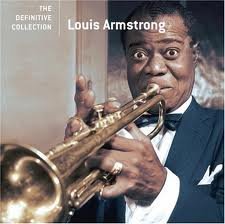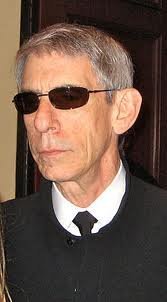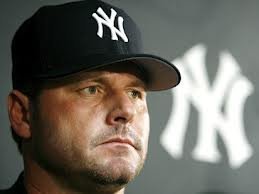Yesterday we topped at 96º.

Dame Elizabeth Rosemond Taylor DBE (February 27, 1932 – March 23, 2011) was a British-American actress. She began her career as a child actress in the early 1940s and was one of the most popular stars of classical Hollywood cinema in the 1950s. She then became the world's highest paid movie star in the 1960s, remaining a well-known public figure for the rest of her life. In 1999, the American Film Institute named her the seventh-greatest female screen legend of Classic Hollywood cinema.
Born in London to socially prominent American parents, Taylor moved with her family to Los Angeles in 1939. She made her acting debut with a minor role in the Universal Pictures film There's One Born Every Minute (1942), but the studio ended her contract after a year. She was then signed by Metro-Goldwyn-Mayer and became a popular teen star after appearing in National Velvet (1944). She transitioned to mature roles in the 1950s, when she starred in the comedy Father of the Bride (1950) and received critical acclaim for her performance in the drama A Place in the Sun (1951). She starred in the historical adventure epic Ivanhoe (1952) with Robert Taylor and Joan Fontaine. Despite being one of MGM's most bankable stars, Taylor wished to end her career in the early 1950s. She resented the studio's control and disliked many of the films to which she was assigned.
She began receiving more enjoyable roles in the mid-1950s, beginning with the epic drama Giant (1956), and starred in several critically and commercially successful films in the following years. These included two film adaptations of plays by Tennessee Williams: Cat on a Hot Tin Roof (1958), and Suddenly, Last Summer (1959); Taylor won a Golden Globe for Best Actress for the latter. Although she disliked her role as a call girl in BUtterfield 8 (1960), her last film for MGM, she won the Academy Award for Best Actress for her performance. During the production of the film Cleopatra in 1961, Taylor and co-star Richard Burton began an extramarital affair, which caused a scandal. Despite public disapproval, they continued their relationship and were married in 1964. Dubbed "Liz and Dick" by the media, they starred in 11 films together, including The V.I.P.s (1963), The Sandpiper (1965), The Taming of the Shrew (1967), and Who's Afraid of Virginia Woolf? (1966). Taylor received the best reviews of her career for Woolf, winning her second Academy Award and several other awards for her performance. She and Burton divorced in 1974 but reconciled soon after, remarrying in 1975. The second marriage ended in divorce in 1976.
Taylor's acting career began to decline in the late 1960s, although she continued starring in films until the mid-1970s, after which she focused on supporting the career of her sixth husband, United States Senator John Warner. In the 1980s, she acted in her first substantial stage roles and in several television films and series. She became the second celebrity to launch a perfume brand after Sophia Loren. Taylor was one of the first celebrities to take part in HIV/AIDS activism. She co-founded the American Foundation for AIDS Research in 1985 and the Elizabeth Taylor AIDS Foundation in 1991. From the early 1990s until her death, she dedicated her time to philanthropy, for which she received several accolades, including the Presidential Citizens Medal. Throughout her career, Taylor's personal life was the subject of constant media attention. She was married eight times to seven men, converted to Judaism, endured several serious illnesses, and led a jet set lifestyle, including assembling one of the most expensive private collections of jewellery in the world. After many years of ill health, Taylor died from congestive heart failure in 2011, at the age of 79.
Elizabeth Rosemond Taylor was born on February 27, 1932, at Heathwood, her family's home at 8 Wildwood Road in Hampstead Garden Suburb, northwest London, England. She received dual British-American citizenship at birth as her parents, art dealer Francis Lenn Taylor and stage actress Sara Sothern, were United States citizens, both originally from Arkansas City, Kansas.
They moved to London in 1929 and opened an art gallery on Bond Street; their first child, a son named Howard, was born the same year. The family lived in London during Taylor's childhood. Their social circle included artists such as Augustus John and Laura Knight and politicians such as Colonel Victor Cazalet. Cazalet was Taylor's unofficial godfather and an important influence in her early life. She was enrolled in Byron House School, a Montessori school in Highgate, and was raised according to the teachings of Christian Science, the religion of her mother and Cazalet.
In early 1939, the Taylors decided to return to the United States due to fear of impending war in Europe. United States ambassador Joseph P. Kennedy contacted her father, urging him to return to the US with his family. Sara and the children left first in April 1939 aboard the ocean liner SS Manhattan and moved in with Taylor's maternal grandfather in Pasadena, California. Francis stayed behind to close the London gallery and joined them in December. In early 1940, he opened a new gallery in Los Angeles. After briefly living in Pacific Palisades, Los Angeles, with the Chapman family, the Taylor family settled in Beverly Hills California, where the two children were enrolled in Hawthorne School.
To read a whole lot more, go here: https://en.wikipedia.org/wiki/Elizabeth_Taylor
|
Elizabeth Taylor
|
|
|---|---|
|
Publicity photo, late 1950s
|
|
| Born |
Elizabeth Rosemond Taylor
February 27, 1932 London, England
|
| Died | March 23, 2011 (aged 79) Los Angeles, California, US
|
| Burial place | Forest Lawn Memorial Park |
| Citizenship |
|
| Occupation | Actress |
| Years active | 1942–2007 |
| Works | Full list |
| Spouses |
|
| Children | 4 |
| Parents | |
| Awards | Full list |
| Website |
|
- 3 1/2 cups water
- 1/2 cup (1 stick) butter
- 1 teaspoon salt
- 1/2 teaspoon black pepper
- 3 1/2 cups instant potato flakes
- 1 small onion, finely chopped
- 1/2 cup bacon bits
- 1 1/2 cups (6 ounces) shredded Swiss cheese
- 1 cup (1/2 pint) heavy cream
- 1 to 2 scallions, thinly sliced
- Preheat oven to 350º. Coat an 8-inch square baking dish with cooking spray.
- In a saucepan, bring water, butter, salt, and pepper to a boil over high heat. Remove saucepan from heat and gently stir in potato flakes, onion and bacon bits until well combined.
- Spoon potato mixture into prepared baking dish. Sprinkle with cheese then pour cream over top. Sprinkle with scallions.
- Bake 35 to 40 minutes, or until heated through and edges are golden.
***And feel free to substitute shredded Cheddar cheese instead of the Swiss or your favorite variety.
1987 – The Federal Communications Commission rescinds the Fairness Doctrine which had required radio and television stations to present controversial issues "fairly".
1993 – A federal judge sentences Los Angeles Police Department officers Stacey Koon and Laurence Powell to 30 months in prison for violating motorist Rodney King's civil rights.
National Coast Guard Day on August 4th celebrates and honors the courageous work of the service members of Coast Guard.
The United States Coast Guard is one of the six US Armed Forces. While this maritime service is a branch of the military, they are a multi-missioned service. During peacetime, it operates under the Department of Homeland Security. However, their responsibilities can be transferred to the US Navy by the President of the United States any time deemed necessary, or by Congress during war times.
Always ready, The United States Coast Guard’s official motto in Latin reads Semper Paratus.
Since 1790, the Coast Guard’s missions have changed. As the nation and the military services grew, maritime needs evolved. In 1917, the first Coast Guard aviators graduated from Pensacola Naval Aviation Training School. Today, aviation is a large part of the Coast Guard’s security, enforcement, and defense readiness.
Always ready to protect our shores and waterways, the Coast Guard provides more than search and rescue. They are a large part of the nation’s navigation system and Marine Environmental Protection.
When Hurricane Katrina struck the Gulf Coast of America, the US Coast Guard saved over 33,500 lives. Their maritime efforts rescued an estimated 24,000 lives from peril in severely dangerous conditions.
Since 1790, service members have been at the ready to provide support whatever the mission. Their commitment continues today.
NATIONAL COAST GUARD HISTORY
The United States Coast Guard traces its founding to an act of Congress on August 4, 1790. The Coast Guard consisted of 10 vessels that carried out the enforcement of various trade and humanitarian duties.














No comments:
Post a Comment